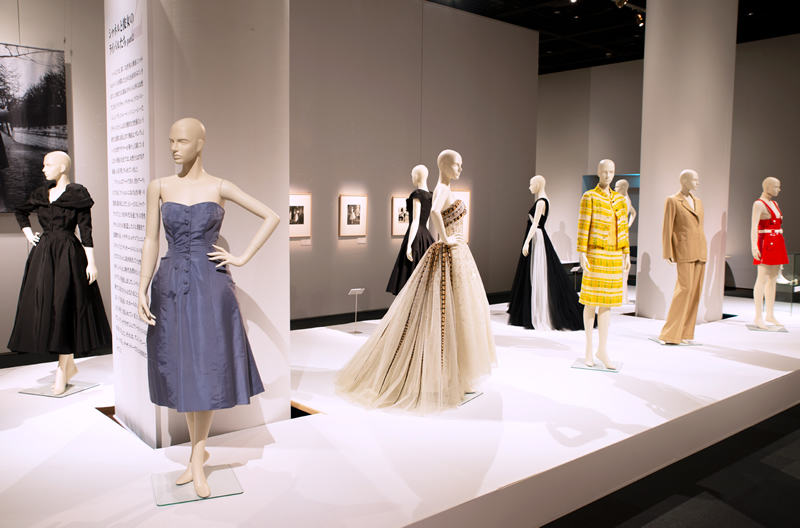
“Curation is storytelling,” according to Valerie Steele, director and chief curator, The Museum at FIT (MFIT). Steele recently brought her love of storytelling to Japan, marking the first time she has guest curated an exhibition outside of the United States. Treasures of Fashion opened May 19 at the Kobe Fashion Museum, one of only a handful of freestanding museums in the world entirely devoted to fashion.
In 2019, Steele traveled to Kobe to explore the museum’s extensive permanent holding, including garments, accessories, and photography. For the exhibition, which looks at fashion from the 18th-century through the present, Steele selected 150 items to create five mini-exhibitions within the galleries:
Rococo: 18th-Century Fashion; Japan and Western Fashion, the Influence of the Kimono on Western Fashion; and Image and Object: Fashion Photography, covering the end of 20th-century fashion and beginning of the 21st century. Chanel and Her Rivals is broken into two parts: The first explores her rivalry with female designers like Vionnet and Schiaparelli (in the period from 1910 to 1930); the second features her post-WWII work when her rivals were prominent male designers like Dior, Balenciaga, and Givenchy.
Due to the COVID-19 travel ban, Steele was unable to return to Japan in March to oversee the final installation of the exhibition. From their remote home offices in New York City, Steele and the MFIT team completed the final elements of the exhibition—a video and a catalog—both of which were translated into Japanese.
Treasures of Fashion is now on view at the Kobe Fashion Museum. For more information, visit fashionmuseum.or.jp/english.
Here, Steele explains her experience as a guest curator.
How long did this exhibition take to curate?
The process took a bit over one year, from the proposal for the idea until the time of the opening. I spent a week at the museum reviewing garments and photos to curate what could be used in the exhibition. Once I returned to the United States, I continued the process via email and phone. This process wasn’t that different from others. Curation is storytelling. It was different doing this without working with the MFIT team. The Kobe Museum has a smaller team but they were eager to follow my ideas, which I appreciated.
The rest has been a lot of emails back and forth working on the diagrams.
Did you pick the Treasures of Fashion theme or did they?
The Kobe Museum of Fashion picked the name of the exhibition. They wanted something that would appeal to their audience. The aesthetic sensibility is very to Japanese culture. It is part of the Japanese point of view.
What are some key looks or garments on display?
As part of the rococo section of the exhibition, there is a Marie Antoinette dress from that period paired with a modern Lolita-style dress, popular among some women in the Japanese subculture. I wanted to show how the 18th-century has been important as being symbolic of “the sweetness of life” prior to the French Revolution.
What is one of your favorite things about the Kobe Museum?
There are so many aesthetic connections between Japan and France. One day, I would love to do a three-part aesthetic collaboration, working with the Kobe Fashion Museum and the Kyoto Costume Institute—both in Japan—and the Palais Galleria (formerly known as the Musée de la Mode) in Paris, since my two favorite places to visit are Japan and France.
The romanticism of fashion in Japan can be summed up with the Japanese expression “mono no aware,” which means, the sad sweetness of passing time, of a beauty that only lasts a moment.
